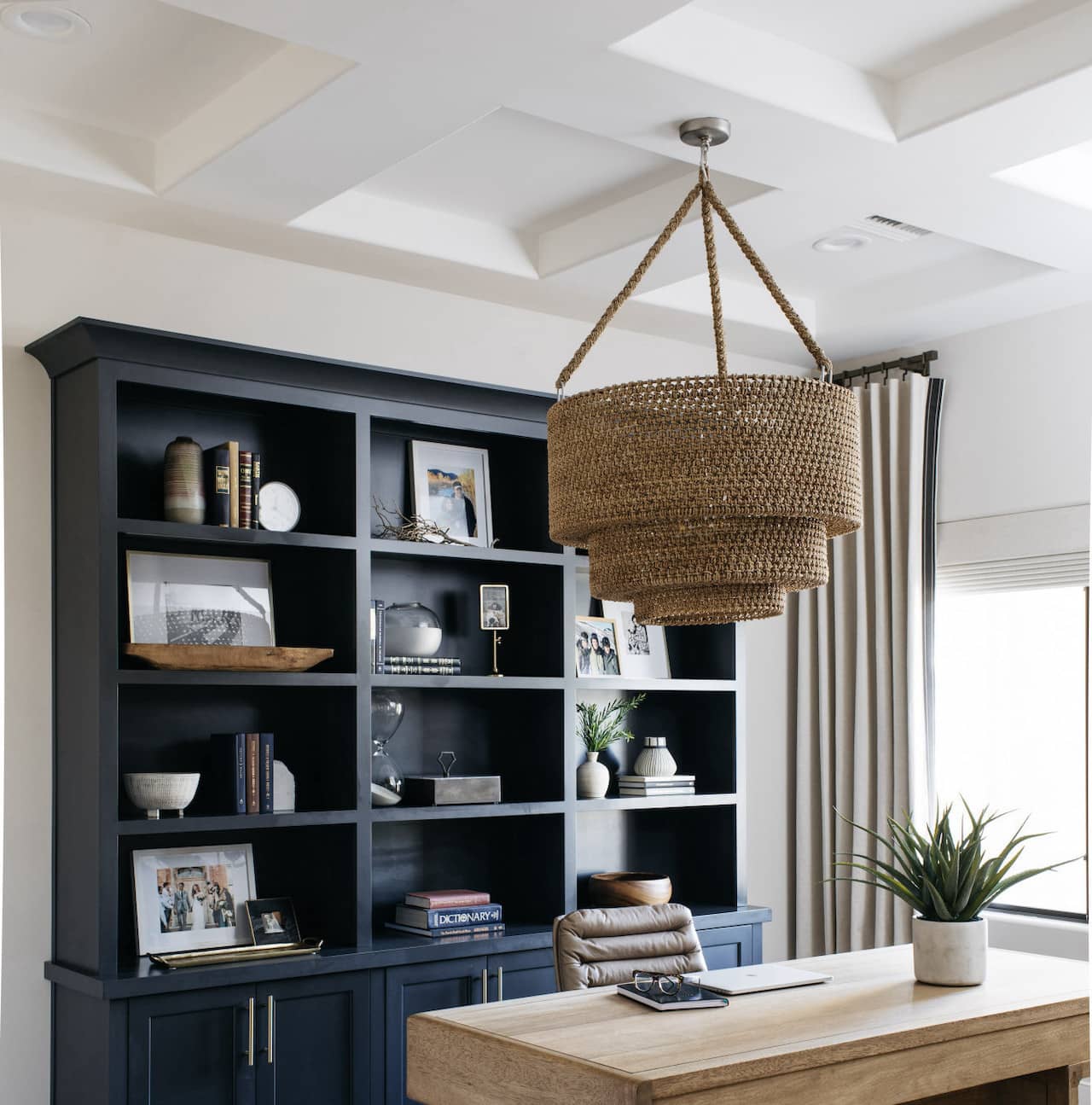
Luxury homes can be customized down to every last square inch. You may not think much about customizing your ceilings, but adding texture to your ceiling is a great way to add a touch of luxury to any room. There are many ceiling texture types to choose from, so how do you know which one is best for your rooms?
What Is Ceiling Texture?
Instead of leaving your ceilings flat and undecorated or plainly painted, you can add textures to create dimension.
Ceiling texture can be created by painting over texturizers or installing textured elements to create sophisticated patterns on your ceiling. Homes with textured ceilings are often perceived as more valuable, which impresses guests and potential buyers alike if you ever choose to sell.
7 Ceiling Texture Types To Consider
Choosing a ceiling texture can be daunting. There are many textures to choose from, and each will add something different to your room. Here are some of the most popular and versatile textures.
1. Orange Peel
Orange Peel ceilings have roughly the texture of a zoomed-in citrus rind, featuring bumps and pits created by spraying drywall mud onto the surface. It has been compared to the Popcorn texture popular in the ‘90s, but Orange Peel has smoother, less symmetrical bumps and is much easier to clean, making it a more popular choice for modern homes.
This ceiling texture type also offers some sound deadening, making it ideal for rooms like offices, where you want it to be quiet, or living rooms, where sound from televisions or stereos might leak into other rooms.
2. Skip Trowel
The Skip Trowel texture can vary in thickness and pattern. It is characterized by drywall mud that is applied by hand using a Skip Trowel tool. It creates a rustic yet sophisticated look with raised patches of varying sizes, reminiscent of Mediterranean architecture. This texture pairs well with glossy paints that highlight small details when lit.
3. Swirl
Ceilings with a Swirl texture feature a repeating pattern of circles. This whimsical design is known for its visual appeal and is great for hiding imperfections in the ceiling. The swirls can be rougher in texture, or more smooth and uniform, depending on the tool used and the precision of the application.
This texture can be difficult to apply correctly, so be sure your painter or drywall professional has experience in the type of Swirl ceilings you desire. Alisha Taylor Interiors works with a variety of skilled professionals and can recommend someone with the skills you need.
4. Lace
Lace ceilings have a delicate air that instantly makes any room look prettier. Made of drywall mud applied in a lace pattern, this is the hardest texture to apply due to the artistry required but is one of the most coveted.
This texture can be difficult to clean, so avoid putting it in areas like the kitchen or bathroom, which can have a lot of humidity or other particles in the air. Instead, feature this pretty design in guest-forward areas like your sitting room or entryway, where it will be seen but won’t require frequent cleaning.
5. Coffered Ceiling
Coffered ceiling texture types come in a variety of patterns and are characterized by a grid of wooden beams painted to match the ceiling.
It can be left plain or accented with molding or decorated tiles. This texture is the most dramatic way to add dimension to your ceiling and can range from imperial to rustic in its design elements, making it highly customizable.
6. Victorian Textured Ceiling
A Victorian textured ceiling is made up of foam, tin, paper, or plaster ceiling tiles with intricate embossed designs. This texture is so named for its popularity during its namesake era. It can be easily applied in most rooms and adds a lavish, classical feel to any space. This texture is great for accenting a chandelier or other lighting feature.
7. Wood Ceiling Texture
Increasing in recent popularity, Wood ceiling texture types are made by installing wooden slats across your entire ceiling, similar in appearance to a hardwood floor. The slats can be installed in traditional straight lines or in a variety of patterns, including V-shapes or boxes. Left unpainted, it adds a rustic, cabin-like ambiance, great for bedrooms, dining rooms, sunrooms, or enclosed porches.
What Rooms Should Have a Textured Ceiling?
Any room can potentially benefit from a textured ceiling. You may choose to texturize in order to add visual dimension, accent a lighting fixture or other ceiling decoration, or simply make an otherwise plain ceiling more interesting. Your interior designer can help you decide which rooms would benefit from which ceiling texture types.
Work With Alisha Taylor Interiors Today
At Alisha Taylor Interiors, we want to ensure that your home reflects who you are. We make it easy to get the home of your dreams, even if you’ve never worked with a designer before. We personalize our services for every client and keep you included every step of the design process to make sure you love the outcome.
If you’re ready to create the living space you’ve always wanted, contact Alisha Taylor Interiors to schedule your first consultation.

